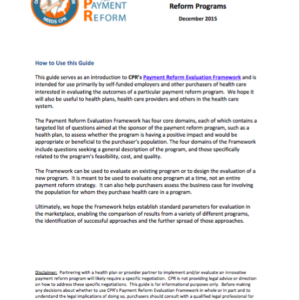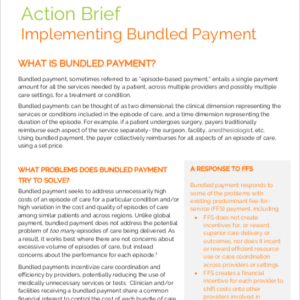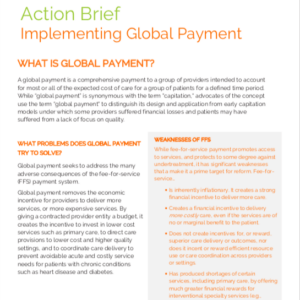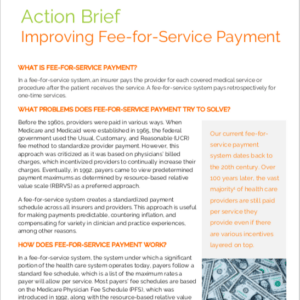Our health care payment landscape is changing. You can influence where its headed.
CPR has long believed that changing the way we pay for care can decrease overall health care spending and improve quality of care. Our tools are designed to help employers assess payment reforms available and determine the best strategies based on market dynamics.
Showing all 9 results
-

The New Evidence Behind Direct-to-Employer Bundled Payments
Health Affairs published a new RAND study on bundled payment in March 2021. It evaluated the cost and quality results of Carrum Health’s prospective bundled payment program for self-insured purchasers. Watch this on-demand webinar recording to hear lead researcher, Christopher Whaley, provide a brief overview of the study findings. Then, hear from a panel of purchaser representatives on the study's implications for solving today’s complicated cost and quality problem. Attendees also gain insight into how CPR's tools and resources can help them evaluate their organization's own payment and delivery reform strategies.$49.00 Buy -

Blazing a Trail in Bundled Payment: TennCare Reveals 2019 Program Results
Jessica Hill, Director, Strategic Planning & Innovation at TennCare, presents TennCare's 2019 cost and quality results for the various episodes of care they have implemented over the past several years.$49.00 Buy -

High-Value Maternity Care: Payment and Benefit Design Solutions
This webinar features Dr. Malini Nijagal, MD, MPH, of University of California San Francisco, and Sara Rothstein, MSc, Director of the 32BJ Health Fund. They discuss how payment reform and benefit design, when applied through a data-driven approach, can help employers move the needle in maternity care.$0.00 -

Toolkit: Advancing Effective Bundled Payment
A toolkit to assess your health plan’s implementation of and future strategy for bundled payment, or evaluate offerings of a centers of excellence vendor or "hybrid" vendor interested in working with self-funded purchasers.$299.00Type: ToolkitBuy -

Understanding Payment Reform
If you know the basics of payment reform and why it's important to change the way that providers are paid, learn more about the nuances of payment reform, such as why the context in which it is implemented is important and potential operational challenges.$0.00 -

How-to-Guide: Evaluating Payment Reform Programs
Download this How-to-Guide to get everything you need to conduct a standard, third-party evaluation of a payment reform program. The tools within the guide will help you know if the program is having the desired impact on cost and quality.$299.00Type: How to GuideBuy -

Action Brief: Implementing Bundled Payment
Learn about bundled payment, how it coordinates the delivery of care among providers, what others have tried, and actions you can take to implement or participate in a bundled payment program.$49.00Type: Action BriefBuy -

Action Brief: Implementing Global Payments
Learn about global, or capitated, payment as an option to replace fee-for-service, what others have tried, and actions you can take to implement or participate in a global payment arrangement.$49.00Type: Action BriefBuy -

Action Brief: Improving Fee-for-Service
Learn options available to purchasers to improve the fee-for-service payment landscape and actions you can take to push for such changes.$49.00Type: Action BriefBuy
